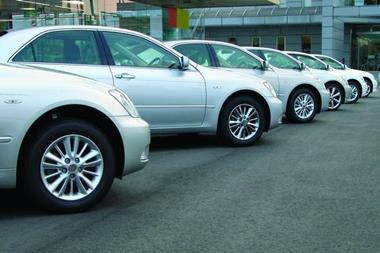Female-only insurers face strategy rethink as others see chance to hike prices in a stalling market
The European insurance industry was reeling this week following the European Court of Justice ruling that gender can no longer be a factor in pricing from December 2012, handed down on Tuesday.
Industry leaders were harsh in their condemnation of the ruling, prompted by a Belgian test case, with RSA UK chief executive Adrian Brown saying it “flies in the face of common sense”.
The industry has nearly two years to figure out how to underwrite without using gender. It also needs to work out what rate movements are needed to bring both sexes to a balanced level and whether female-focused motor insurers can survive.
The ruling immediately sparked widespread concerns that a ban on age discrimination could follow. This would cause further pricing problems for motor and health underwriters, and huge upheaval for composites such as Aviva because of implications for life insurance.
Director of PricewaterhouseCoopers’ actuarial practice Mohammad Khan said: “The concern now for insurers is whether age will be next on the European Court of Justice’s agenda. Any ruling against discriminating an insurance premium based on age would have a far greater impact on consumers and the insurance industry than today’s ruling.”
What criteria can now be used as a substitute for gender will now be at the forefront of insurers’ minds. Car make and model is the obvious replacement, but any underwriter that focuses too heavily on these criteria faces legal action for gender discrimination by association.
This issue will be looked at closely by female-only insurers Diamond and Sheilas’ Wheels. The latter has indicated that it will rely on its brand image and clever marketing to maintain its strong female customer base.
There was scant mention of the one obvious boon for insurers: the opportunity to hike rates, which could bring some private motor books back into profit after a disastrous few years.
Rating agency Fitch said the ruling “could be seen as good news, as it will provide insurers with the opportunity to raise prices in a difficult market”. Director of the insurance team Martyn Fitch commented: “The 17-29 age bracket is again likely to see the greatest rate increase, as was the case in 2010 when UK motor insurers increased rates by 30%-45% for this bracket in an effort to restore profitability.”
Consumers will pay for the ruling, industry bosses say
LV= chief executive John O’Roarke: “The difficulty for insurers is that while rates for females have to go up, it is not economic to reduce rates for young males.
“From the end of 2012, young female drivers’ rates will undoubtedly increase, but there is a possibility that at the older end of the spectrum female rates will actually fall.”
RSA chief executive Adrian Brown: “Today’s judgment flies in the face of common sense. It is completely disadvantageous to the very people it was intended to protect and prevents insurers from using a legitimate rating factor.
“Once again, consumers are going to have to pay the price for an illogical change in the law. I would urge the government to make the case for honest drivers, who are already suffering due to the rising price of petrol and the growing compensation culture.”
Biba chief executive Eric Galbraith: “Insurance is about risk and should be risk-based. It’s a very dangerous decision to start messing around with risk-based pricing.”
ABI acting director general Maggie Craig: “This gender ban is disappointing news for UK consumers and something the UK insurance industry has fought against for the last decade. The judgment ignores the fact that taking a person’s gender into account, where relevant to the risk, enables men and women alike to get a more accurate price for their insurance.
Hosted by comedian and actor Tom Allen, 34 Gold, 23 Silver and 22 Bronze awards were handed out across an amazing 34 categories recognising brilliance and innovation right across the breadth of UK general insurance.














































No comments yet